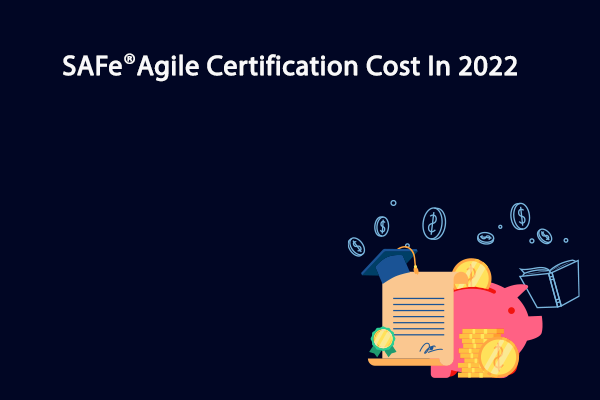Scaled Agile Framework, also known as SAFe, is quickly gaining attention in the
corporate world. Just Google the keyword “Scaled Agile Framework”, and you can see
49,70,000 search results in a matter of seconds. These are Steps To Applying Scaled Agile.
The report from the 15 th State of Agile Survey says that nearly 37% of the
respondents are using the SAFe model in their enterprise, in other words, 4 times
more than other scaling agile frameworks like Scrum @ Scale. Few notable and reputed
companies like Infosys, Fitbit, Philips, IBM, HP, and Standard Bank have already
implemented and reaped the benefits of SAFe system.
Obviously, this makes everyone curious about this popular and flexible framework.
Here are quite interesting and amazing statistics on SAFe:
1. 50% Faster Time to Market.
2. 35% Increase in Productivity.
3. 50% Defect Reduction.
4. 30% More Engaged and Satisfied Employees.
What Is SAFe?
This is a proven and integrated knowledge base containing several principles and
competencies that enable organization achieve business agility using a Lean-Agile
mindset, DevOps, and Systems Thinking.
SAFe supports collaboration, delivery, and alignment between large and multiple agile
teams. It combines a set of processes, best practices, and policies to help large complex
organizations easily implement agile methods, including Scrum, Kanban, and Lean.
Difficulties in Implementing SAFe®
Let’s go through some details on why SAFe implementation fails:
46% of organizations reported inconsistencies in processes & practices.
43% attribute cultural conflicts.
42% cited the organization's overall resilience to change as the reason.
42% said they lack skills and experience.
41% stated lack of leadership as the biggest problem.
40% said they lacked management support.
These tell us that Scaled Agile Framework (SAFe) is like a dark horse among various
agile frameworks and professionals need relevant training to implement it properly.
SAFe Agilist Certification training gives you all the necessary skills and practical
experience that you need to implement SAFe in your organization.
SAFe Implementation Process. Steps To Applying Scaled Agile
Scaled Agile Framework (SAFe) is an iterative approach designed to create strategic
business value as it operates at three levels in an organization: team, program, &
portfolio.
Teams represent daily work.; The program relates to the organization's strategy to
achieve common goals, and the portfolio is about creating value flow and quality for the
end-users.
The SAFe framework evaluates the delivery flow’s sustainability and gives feedback:
This guarantees sustainable development through Big Picture (framework
requirements) while avoiding technical constraints.
It also gives feedback as it contributes to improving the structure.
Implementing SAFe – The 4 Ways : Steps To Applying Scaled Agile
SAFe implementations can derail if you don't take required steps. You can't change
decades of bureaucratic structures overnight. It is important to gain support and
approval from senior management, the technical team head, and other employees as
part of the process.
If you want to make sure your rollout of the SAFe methodology goes smoothly, the
following four steps will help you.
Reap the Benefits of SAFe with Successful Implementation
1. Chart The Value Streams In Your Process
Value streams are the steps a solution implements to consolidate solutions that create a
constant value stream for medium to long-term goals.
To create a unique mindset focused on getting the results you want, you need to know
the value flow of your processes.
Remember that the Scaled Agile Framework is a comprehensive plan for spreading
Agile concepts throughout your organization. Therefore, defining the value stream is
essential to creating an overall picture, a big layout of who needs to do what (role
pursuits) in SAFe.
2. Train Your Employees To Utilize Agile Methods & Practices
Implement a model like SAFe, define and train change agents, especially managers,
executives, and leaders, to use lean operations and agile management techniques. The
goal is to create a specialized group to support the organization based on Lean-Agile
management methods.
3. Test The Agile Release Trains (ARTs) Execution
ART (Agile Release Train) is the heart of SAFe because it represents a unified
organization that involves specific Agile teams focused on a shared goal.
ART is a collection of practices and methodologies designed to help teams reach their
goals. These include Scrum/Agile ceremonies, which can be used for goal-setting and
testing ideas.
4. Extend Your Portfolio
You should now have a well-qualified crew with Scaled Agile certification — and it's
time to begin justifying that investment. And then the team is now ready to prove their
worth and expand their knowledge, through ART.
Most Significant Practices In Implementing SAFe
When adopting SAFe, following the below practices will do wonders for your business.
Share your vision of business and results.
Choose the right agile metrics that show the value of your business.
Create transparency with business performance feedback.
Harness business value to secure the initial engagement of IT leaders and
businesses.
Train the enterprise leaders and understand that they are in no doubt about
SAFe.
Provide feedback on business performance to encourage engagement.
Create a LACE (Lean-Agile Center of Excellence) charter to encourage change
agents.
Offer proper training and mentoring to your teams.
Simplify the PI (Program Increment) planning process to ensure program
transparency.
Manage the implementation and operations of LPM (Lean Portfolio
Management).
Important Reasons For Implementing SAFe In An Organization
1. Team Alignment Towards A Common Goal
Aligning a team is a process to make sure that all multi-functional teams are committed
to a shared goal. SAFe ensure team alignment because it enables smooth collaboration
and communication.
2. Facilitate Team’s PI Planning
Team planning is a big challenge for companies. SAFe offers a PI planning solution. It is
a meeting of multiple teams that are part of ART where they gather to plan an action
plan, work with features and add-ons, and identify team dependencies.
The PI planning benefits include building trust, supporting ART collaboration, getting
things done faster, and making decisions quickly.
3. Collaborative Work Among Teams
Agile teams share a common vision and goal of delivering value to their end-users. In
SAFe, every team member works hard. They work together to deal with dependencies
and break down barriers. Continuous feedback ensures better results and collaboration.
4. Enable Enterprise-Wide Visibility
Agile management solutions throughout the product lifecycle reflect and bridge
different gaps. This helps them manage day-to-day work and gives them company-wide
visibility.
5. Cross-Team Dependencies
You’re experiencing dependency issues between your teams, aren’t you? To ease the
pain of urgent meetings, late deadlines, and messy context changes, start using
dependency management. It will help you better understand your dependencies and
take steps towards reducing clutter. When the cross-team dependencies are described
in both a technical and business context, it becomes easier for teams to work together.
SAFe Adoption = Achieve Agility
Finally, we can say that Agile frameworks like the Scaled Agile Framework (SAFe) go
beyond Scrum and other agile methodologies to support business agility and
productivity.


